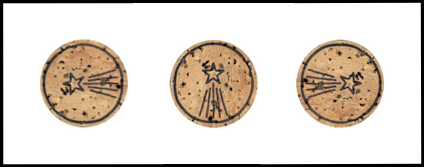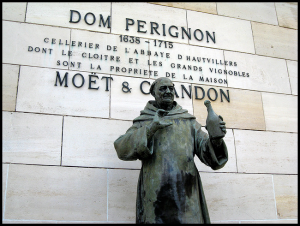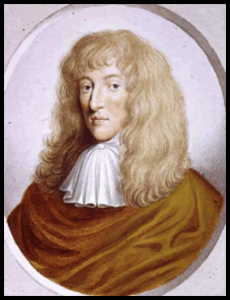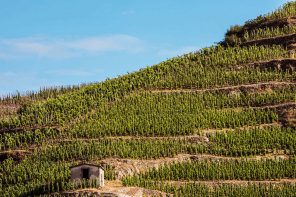If you were to ask a room full of champagne drinkers how champagne (and all sparkling wine) came to be, the vast majority would probably tell you the same story.
Bubbly, it is commonly believed, was invented in the 17th century by a humble French monk named Dom Pierre Pérignon. Deep in the cellars of the Abbey of Hautvillers, pious Pierre mastered the art of secondary fermentation, at least when he wasn’t washing robes and re-lighting candles.
After years of experimentation, the Dom finally perfected the refermentation process and gave unto the world an effervescent concoction that would delight the masses for ages to come.
Better yet, after taking mankind’s first sip of sparkling wine, Pérignon is believed to have shouted “Come quickly- for I am drinking the stars!” To this very day, nearly all sparkling wine corks are emblazoned with stars to honor the Dom and his historical utterance.
The legacy of pious Pierre doesn’t stop there. His tongue was so prodigious that he could taste one single grape and name the vineyard it was from. Extraordinarily, many also claim that Pérignon was blind. Imagine… a man who never even saw the stars was the first to bottle and taste them.
If the story of Dom Pérignon seems a bit too dazzling to be true- that’s because the vast majority of it is utter bull. In fact, during his time, secondary fermentation (the process that causes wine to “sparkle”) was avoided like the plague.
Refermentation was viewed as a grave winemaking mistake before it was properly understood, primarily because it caused bottles of wine to spontaneously explode. If anything, Dom Pérignon’s contributions to wine had more to do with preventing secondary fermentation than using it as a form of natural carbonation.
To his credit, he was the first to blend grapes before they were pressed, but his list of actual accomplishments pretty much ends there. Also, he could totally see with his eyes.
The rest is a myth propagated by Dom Pérignon’s successor at the Abbey of Hautvillers, Dom Groussard. Groussard was the first marketeer monk and the ultimate hype man. He falsely credited his predecessor with all of the above in order to bring glory to the church and to his abbey. His plan worked.
Today, the Abbey of Hautviller is owned by Moët & Chandon, the winemaker that produces the much fabled Dom Pérignon Champagne. Moët was good enough to erect a statue of Pierre right by the entrance. Shockingly, they’ve done little to set the record straight. That may be because his legend helps them sell bottles that cost more than you could get for your organs on the black market. But maybe not, I guess.
As it turns out, the English scientist Christopher Merrett (the first man to list all the birds and stones in England!) was also the first to document success with bottle refermented wine. His industrialist friend Sir Robert Mansell pioneered coal powered glass production techniques in Newcastle. This meant thicker bottles, and thicker bottles meant that secondary fermentation no longer caused explosions.
Yet even before the poodleheaded (see above) Merrett pulled off a primitive form of sparkling wine in England- secondary fermentation was being used to great effect by the unlikeliest of folks: rural Belgian farmers.
These unwitting pioneers weren’t making wine, they were brewing. They had strong bottles before the rest, and they used them to make light, sweet and effervescent Saison style beers. This is the same style of beer that many now describe as “champagney.” Turns out, champagne is actually “saison-y.”
Oh, and all those stars emblazoned on sparkling wine corks? They commemorate a comet that flew by in 1811, 96 years after Dom Pérignon’s death. Apparently, it was a great year for bubbly.
Go figure.











